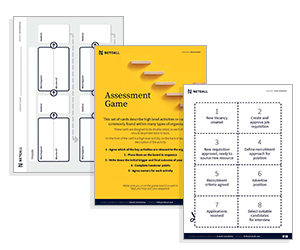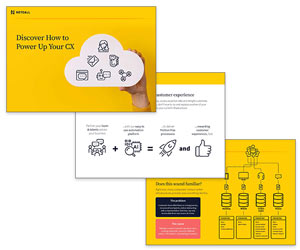You need to consider task complexity, cost and the need for reassurance when planning a multichannel strategy, according to Netcall.
Customer service managers are in agreement that there are three broad customer task categories:
- Routine (easy to do)
- Those needing support (tasks where some aspects need help from an advisor)
- Complex (tasks that need skilled input from an advisor)
Routine tasks are those where actions are specific and repetitive, required answers/outcomes are clearly classified and typically staff believe they add little value, for example an address change or balance enquiry.
As customer service professionals analyse total workflow, these routine tasks are the first to be appropriately automated, and this frees staff to support more complex enquires while simultaneously raising their morale.
The other two task types, ‘supported’ and ‘complex’, are likely to need a staged process or triage. The advisors will question and determine urgency and severity before they can provide customers with appropriate support.
A supported task may utilise channel slide or moving between channels, which if you can offer a ‘helping hand’ as part of the process it provides constructive support and is an opportunity to teach customers to be more self-sufficient on digital. For example, webchat support of a customer stuck during an online form-completion session then empowers the customer to complete the form and they return to the website for future transactions.
Investing in the needed support at first contact will help lower costs
Gaining cost and customer-effective resolution for complex interactions typically needs personalised attention, for example a benefits or universal credit assessment.
While the initial transaction costs may seem high, investing in the needed support at first contact, to ensure complex forms are correctly completed or detailed regulation or similar feedback is provided, will ultimately result in the lowest possible cost per transaction.
Transaction cost versus a customer’s need for reassurance
The impact of the transaction outcome on the life circumstances of the customer will affect their need for reassurance from an agent or even the manager. For example, social support payments will be pivotal to a family. (Thank you to Kirklees Council for sharing their insight into this method.)
Once tasks are categorised into routine, supported and complex, their ’emotional’ or reassurance quotient can be assigned. It cannot automatically be assumed that all complex tasks require high reassurance. Supporting customers who require high reassurance becomes costly if the path to rapid contact resolution is not effectively mapped.
Automated proactive outbound follow-up messages via SMS, email or automated voice detailing progress will avoid inbound requests and deliver reassurance while managing customer expectations.
Considering the correct channel for any transaction requires clear thinking and a sincere understanding of the implications that the transaction will have on the life circumstances of the customer.
We offer these concepts as a method to focus necessary attention on the case-for-change factors to consider in any channel-shift project to deliver business benefit and customer outcome.
For more information about Netcall, visit their website.
Author: Megan Jones
Published On: 5th Aug 2015 - Last modified: 18th Dec 2018
Read more about - Archived Content, Netcall










